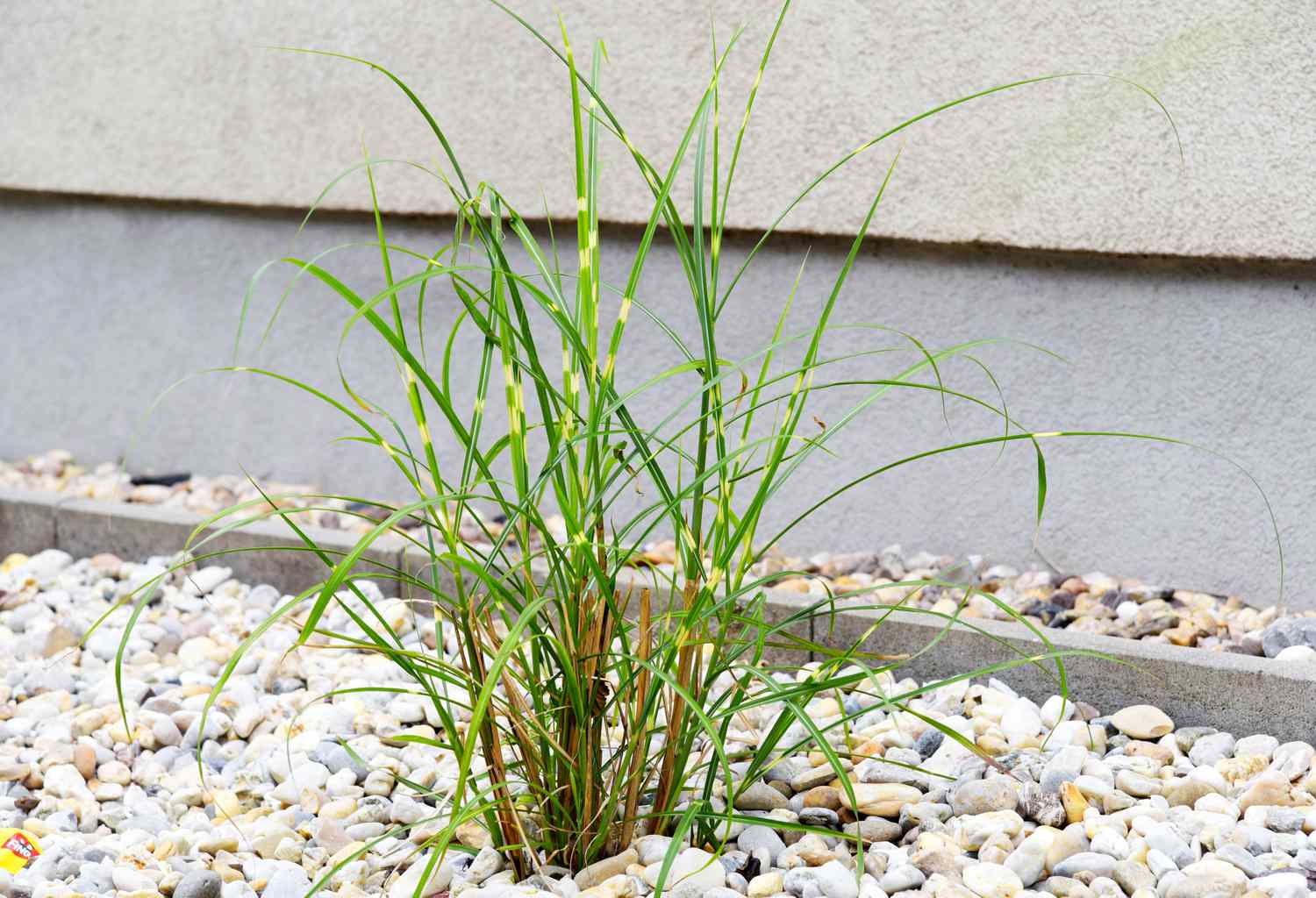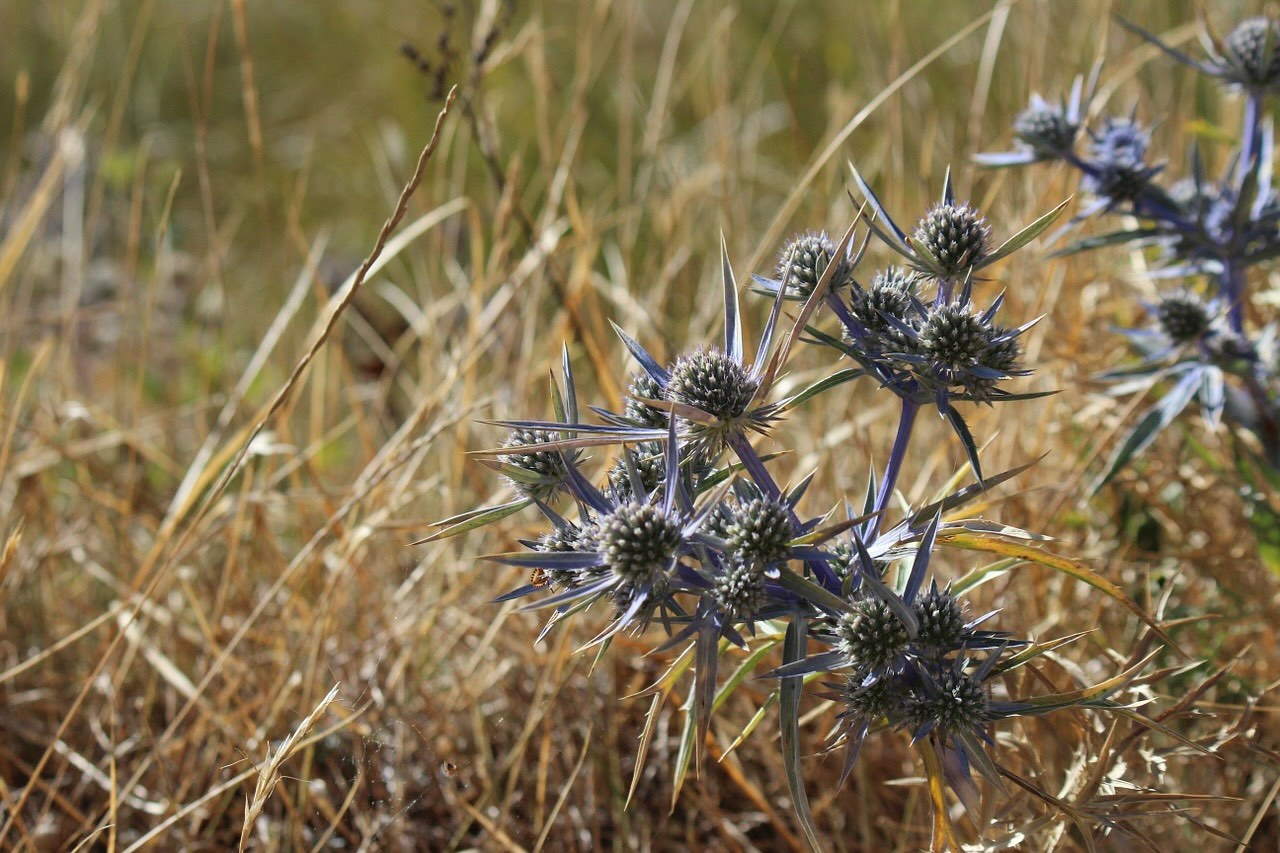Home>Gardening & Outdoor>Landscaping Ideas>How To Get Rid Of Zebra Grass


Landscaping Ideas
How To Get Rid Of Zebra Grass
Modified: August 18, 2024
Learn effective landscaping ideas to remove zebra grass from your garden. Get expert tips on getting rid of zebra grass and restoring your landscape.
(Many of the links in this article redirect to a specific reviewed product. Your purchase of these products through affiliate links helps to generate commission for Storables.com, at no extra cost. Learn more)
Introduction
Zebra grass, known for its striking striped appearance and graceful plumes, can add a touch of exotic beauty to any landscape. However, this ornamental grass can quickly become invasive if not properly managed. Its rapid growth and resilience make it a formidable foe for gardeners seeking to maintain a well-manicured yard or garden.
In this comprehensive guide, we will explore effective methods for removing zebra grass and preventing its regrowth. Whether you're dealing with a few unruly clumps or a full-blown zebra grass invasion, understanding the best removal techniques is crucial for reclaiming your outdoor space.
From manual removal to chemical treatments, we will delve into various strategies to suit your preferences and the scale of the infestation. Additionally, we will discuss preventive measures to stop zebra grass from staging a comeback and overtaking your landscape once again.
So, if you're ready to bid farewell to the relentless encroachment of zebra grass and restore balance to your outdoor haven, let's embark on this journey to regain control of your green space.
Key Takeaways:
- Say goodbye to zebra grass invasion by using manual removal or chemical treatments. Prevent regrowth by monitoring, mulching, and cultivating a diverse plant community for a balanced and vibrant landscape.
- Get rid of zebra grass with hands-on manual removal or targeted chemical treatments. Prevent regrowth by monitoring, mulching, and cultivating a diverse plant community for a balanced and vibrant landscape.
Read more: How To Get Rid Of Crabgrass
Understanding Zebra Grass
Zebra grass, scientifically known as Miscanthus sinensis 'Zebrinus,' is a perennial ornamental grass native to Japan. Its distinctive appearance is characterized by horizontal yellow stripes that adorn the green foliage, creating a visually striking effect. In late summer to early fall, zebra grass produces feathery plumes that transition from pink to silver, adding an elegant touch to the landscape.
While zebra grass can be a captivating addition to gardens and landscapes, its aggressive growth habit and rhizomatous roots enable it to spread rapidly, often outcompeting other plants and disrupting the balance of the ecosystem. This invasiveness can pose a significant challenge for gardeners and landscapers, necessitating effective strategies for containment and removal.
When left unchecked, zebra grass can encroach upon lawns, flower beds, and natural areas, creating a dense thicket that is difficult to manage. Its robust nature allows it to thrive in various soil types and environmental conditions, further contributing to its tenacious presence.
Understanding the growth patterns and resilience of zebra grass is essential for devising a targeted approach to its removal. By gaining insight into its propagation methods and adaptability, individuals can implement tailored solutions to curb its spread and restore the equilibrium of their outdoor spaces.
As we delve into the methods for eradicating zebra grass, this foundational understanding of its characteristics will serve as a valuable framework for implementing effective removal and prevention strategies.
Manual Removal
When tackling zebra grass infestations, manual removal is a fundamental strategy that can yield significant results, especially for smaller patches or isolated clumps. This hands-on approach allows for precise targeting of the grass while minimizing the impact on surrounding vegetation.
To commence the manual removal process, it is advisable to equip yourself with the appropriate gardening attire, including gloves and long sleeves to protect your skin from potential irritation caused by the grass' sharp leaves. Additionally, ensure the use of sharp, durable gardening shears or a pruning saw to facilitate the cutting and extraction of the zebra grass.
Begin by carefully identifying the perimeter of the zebra grass clump, delineating the area that requires removal. Using the pruning shears or saw, meticulously cut the grass at ground level, taking care to avoid damaging nearby plants and shrubs. Once the grass has been severed, proceed to extract the root system, ensuring thorough removal to prevent regrowth.
For larger zebra grass specimens, a digging spade or garden fork may be employed to excavate the root mass. By leveraging these tools, the roots can be loosened and lifted from the soil with greater ease, facilitating comprehensive extraction.
After the removal process is completed, it is essential to dispose of the zebra grass clumps responsibly. Avoid composting the remnants, as the resilient nature of zebra grass may lead to its resurgence in the compost pile. Instead, consider discarding the extracted vegetation in green waste bins or through municipal green waste disposal programs.
While manual removal can be effective for localized zebra grass control, it may prove labor-intensive for extensive infestations. In such cases, complementary methods, such as chemical treatments, can be integrated to address larger-scale invasions and prevent regrowth.
By implementing thorough and meticulous manual removal techniques, gardeners can make significant strides in reclaiming their outdoor spaces from the encroachment of zebra grass, setting the stage for a revitalized and harmonious landscape.
To get rid of zebra grass, dig up the entire plant, including the roots, and dispose of it. Be sure to remove any new shoots that may sprout up to prevent regrowth.
Chemical Removal
Chemical removal presents an effective approach for addressing widespread zebra grass infestations and inhibiting regrowth. When utilized judiciously and in accordance with manufacturer guidelines, herbicidal treatments can provide targeted control of zebra grass while minimizing impact on desirable vegetation.
Prior to applying any herbicidal products, it is imperative to carefully read and adhere to the instructions provided by the manufacturer. Selective herbicides formulated for grassy weed control can be particularly advantageous, as they specifically target grass species while sparing broadleaf plants, preserving the diversity and integrity of the landscape.
When initiating the chemical removal process, it is essential to choose a dry, wind-free day to prevent unintended herbicide drift and ensure optimal adherence to the zebra grass foliage. Utilize a precise, low-pressure sprayer to apply the herbicide directly to the grass, taking care to avoid overspray onto neighboring plants.
Following the application, monitor the treated area regularly to assess the efficacy of the herbicidal treatment. Depending on the product used, visible signs of zebra grass decline, such as yellowing or browning of the foliage, may become apparent within a few weeks, indicating the successful suppression of the grass.
After the zebra grass exhibits signs of herbicidal impact, it is crucial to exercise caution when handling the treated vegetation. Refrain from composting or mulching the affected grass, as residual herbicide may persist and compromise the integrity of the compost or soil. Instead, securely bag the remnants and dispose of them in accordance with local waste disposal regulations.
While chemical removal can be an effective tool for managing zebra grass, it is paramount to prioritize environmental stewardship and safety throughout the process. By adhering to recommended application rates and practices, individuals can mitigate the potential ecological impact and safeguard the overall health of the landscape.
By integrating chemical removal as part of a comprehensive zebra grass management strategy, gardeners can exert targeted control over invasive grass species, fostering a balanced and flourishing outdoor environment.
Preventing Zebra Grass Regrowth
After successfully removing zebra grass from the landscape, preventing its regrowth is paramount to safeguard the integrity of the outdoor space and forestall future invasions. Implementing proactive measures to inhibit the resurgence of zebra grass is essential for maintaining a well-maintained and harmonious environment.
One effective strategy for preventing zebra grass regrowth involves vigilant monitoring of the treated areas. Regularly inspect the site of the former infestation to promptly address any signs of zebra grass resurgence. By promptly identifying and addressing emerging growth, gardeners can intervene before the grass gains a foothold and proliferates once again.
Furthermore, cultivating a dense and robust understory of desirable plants and ground covers can impede the reestablishment of zebra grass. By fostering a competitive and diverse plant community, the available resources and space for zebra grass colonization are diminished, reducing the likelihood of its return.
Mulching the treated areas with a layer of organic mulch, such as wood chips or straw, can serve as a protective barrier against zebra grass regrowth. The mulch not only suppresses weed emergence by smothering potential growth but also contributes to soil moisture retention and nutrient enrichment, fostering a conducive environment for desirable plant species.
Regularly cultivating and aerating the soil in the former zebra grass infestation site can disrupt any latent rhizomes and prevent their resurgence. By loosening the soil and removing any remaining zebra grass fragments, gardeners can mitigate the potential for regrowth and create an inhospitable environment for the invasive grass.
Lastly, fostering a proactive approach to landscape management, including routine maintenance and monitoring, is crucial for preventing zebra grass regrowth. By staying attuned to the dynamics of the outdoor space and promptly addressing any signs of zebra grass resurgence, individuals can uphold the integrity and balance of their landscape.
By integrating these preventive measures into the post-removal landscape management plan, gardeners can fortify their outdoor spaces against the return of zebra grass, ensuring a resilient and vibrant environment for years to come.
Read more: How To Get Rid Of Grasshoppers
Conclusion
As we conclude this comprehensive guide on removing and preventing the regrowth of zebra grass, it is evident that addressing the invasiveness of this ornamental grass requires a multifaceted approach that combines manual, chemical, and preventive strategies. By understanding the distinctive characteristics of zebra grass and its propensity for rapid proliferation, individuals can tailor their removal and prevention efforts to suit the specific needs of their landscape.
Manual removal, characterized by its hands-on and targeted approach, serves as a fundamental method for addressing localized zebra grass infestations. By meticulously cutting and extracting the grass and its root system, gardeners can make significant strides in reclaiming their outdoor spaces from the encroachment of this resilient grass species.
Chemical removal, when employed judiciously and in accordance with recommended practices, provides an effective tool for managing widespread zebra grass infestations and inhibiting regrowth. Selective herbicidal treatments can offer targeted control while minimizing impact on desirable vegetation, contributing to the restoration of a balanced and thriving landscape.
Furthermore, the implementation of preventive measures is essential for fortifying the landscape against the resurgence of zebra grass. Through vigilant monitoring, fostering a diverse plant community, mulching, soil cultivation, and proactive landscape management, individuals can create an inhospitable environment for the regrowth of zebra grass, ensuring the long-term health and resilience of their outdoor spaces.
By combining these strategies and maintaining a proactive stance towards zebra grass management, individuals can reclaim and preserve the integrity of their landscapes, fostering a harmonious and flourishing outdoor environment for enjoyment and appreciation.
As we bid adieu to the relentless encroachment of zebra grass, let this guide serve as a beacon of knowledge and empowerment, equipping individuals with the tools and insights needed to overcome the challenges posed by this invasive grass and cultivate thriving, balanced landscapes.
With a steadfast commitment to responsible stewardship and a comprehensive approach to zebra grass management, individuals can embark on a journey towards reclaiming and revitalizing their outdoor havens, ensuring a future where the allure of zebra grass is balanced by the vibrancy of a diverse and resilient landscape.
Frequently Asked Questions about How To Get Rid Of Zebra Grass
Was this page helpful?
At Storables.com, we guarantee accurate and reliable information. Our content, validated by Expert Board Contributors, is crafted following stringent Editorial Policies. We're committed to providing you with well-researched, expert-backed insights for all your informational needs.















0 thoughts on “How To Get Rid Of Zebra Grass”